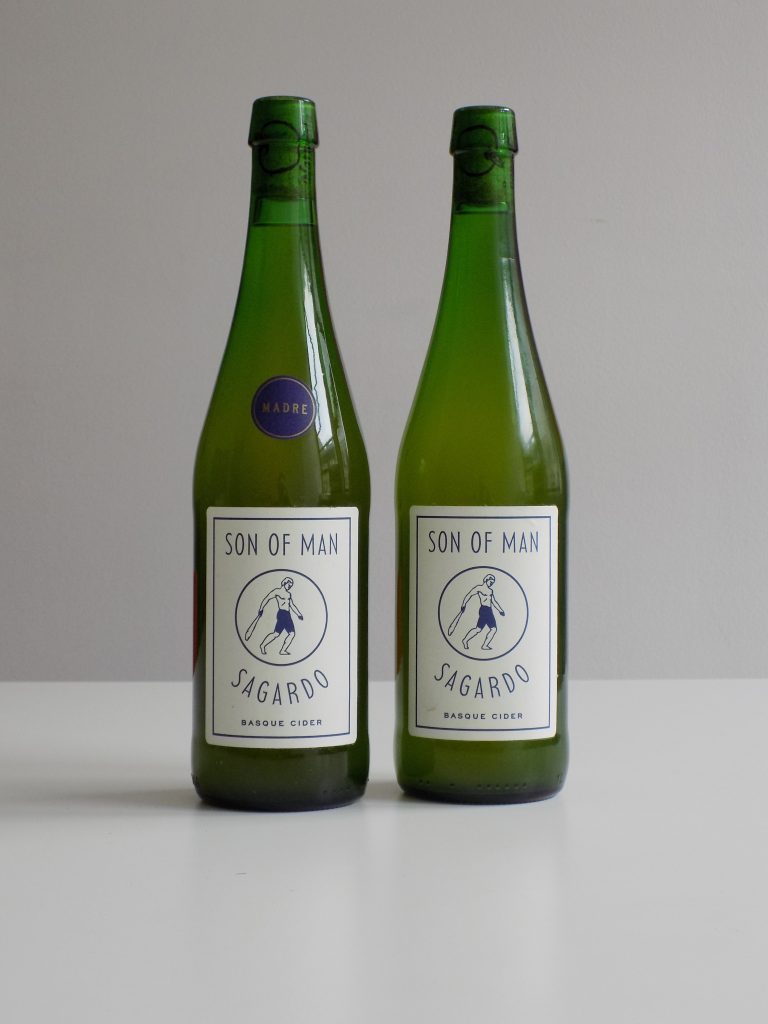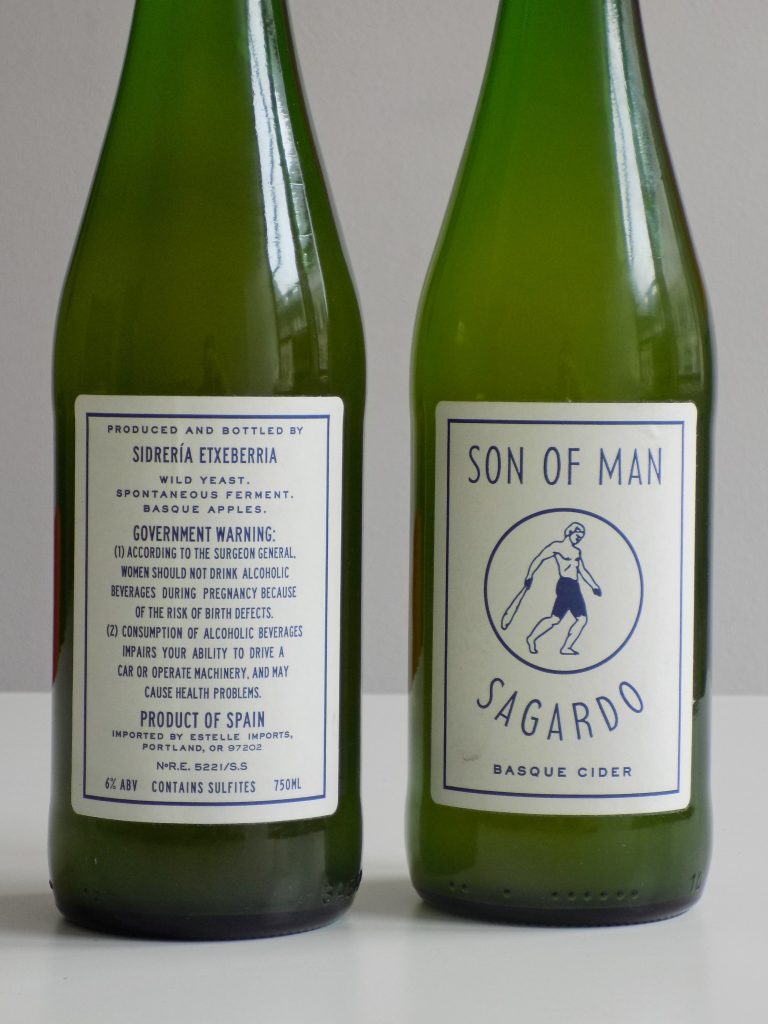Son of Man’s Basque-Style Cidery in Cascade Locks, Oregon
Funky, earthy cider that’s definitely different than the common kind

The land surrounding Son of Man’s brewing facilities in Cascade Locks has an untouched quality—as if life slowly appeared over time, careful not to interrupt what was already here. Just a few miles from the facility, the Bridge of the Gods connects Washington and Oregon. On the Columbia River below, Native American tribes have exclusive fishing rights for salmon. The few tourists that pass through the town stop by the Gorge or pull over to bask in the beauty of region.
It’s here, in the sharp division of the two states, that Jasper Smith—after learning from Spanish cider-makers Guillermo Castaños and Guillermo Montiel—will make Son of Man’s first vintage of Oregon-ingredient, Basque-style cider.
Almost more like a white wine or a kombucha than a traditional cider—for both its flatness and its woody, earthy funk—Basque-style cider has long been a beverage known in the Spanish region for its eclectic service and gastronomic relevancy, but also its transcendence across classes, generations and drinkers. (At many supermarkets there, you can buy a bottle for a single Euro. In the United States, a 750 mL bottle runs no more than $10.)
 Since the cider is bottled unfiltered and unrefined, it conditions in the bottle and becomes relatively settled there, rather than in a tank. Rustling the bottle won’t make it explode, and shaking it won’t make the cork blow. Unlike sparkling wine or beer, there won’t be any billowing white foam—instead, when a bottle is opened, servers pour it from great heights to reactivate the cider, aerating it. Few traditions are as tantalizing—maybe sabering the top off a bottle of Champagne or “kissing” mezcal. It’s an invigorating, old-world technique that’s a lot fun. In that two-foot drop (if you’re a professional), the cider is reignited. When it hits the glass, it becomes more aromatic, a little bit funkier, and the notes of wood, apple pie and citrus slip to the top.
Since the cider is bottled unfiltered and unrefined, it conditions in the bottle and becomes relatively settled there, rather than in a tank. Rustling the bottle won’t make it explode, and shaking it won’t make the cork blow. Unlike sparkling wine or beer, there won’t be any billowing white foam—instead, when a bottle is opened, servers pour it from great heights to reactivate the cider, aerating it. Few traditions are as tantalizing—maybe sabering the top off a bottle of Champagne or “kissing” mezcal. It’s an invigorating, old-world technique that’s a lot fun. In that two-foot drop (if you’re a professional), the cider is reignited. When it hits the glass, it becomes more aromatic, a little bit funkier, and the notes of wood, apple pie and citrus slip to the top.
Smith first fell in love with Basque cider while out to dinner with his wife, Ella. She wasn’t feeling well and sought out a drink to remedy her unsettled stomach. The server, like Smith, was a natural wine aficionado but recommended something a bit lighter: Basque cider. Infatuated, the two searched menus across town looking for an opportunity to try it again. But, results were limited to one natural wine shop across town, so Smith ordered cases of nearly every imported cider he could.
After living in San Francisco, Smith and his wife realized a move back home, to Oregon, could offer them the opportunity to bring their mutual passion to fruition: to open a Basque-style cidery. In preparation, Smith planned a trip to Basque cider country during Txotx (the annual festival) to see how cider is made, how to differentiate apples and, most importantly, to try the season’s yield directly from the barrel at 15 cider houses throughout San Sebastian. Aside from being enamored with the festivity, the convivial nature of the community and the quality of the product, Smith was determined to find someone to work with in hopes of solidifying a partner in the business.
That partner turned out to be Guillermo Castaños. The two worked together to find an apple grower in Bera, Spain to make an initial run of cider. This first run, Sagardo Madre, is made from fruit grown on a family farm on the Bidasoa River. The product is the first release from Son of Man, but not the inaugural, full-scale production offering that will come after this fall’s apple harvest in Oregon. This first iteration, Smith says, “is a proof of concept,” and that “round two is going to be fuller and more rounded.”
Smith is primarily referring to process (the apples and the yeast are from a different region) and season, but he implies that Basque country and Oregon aren’t that different. “The two are nearly on the same parallel—they have the same climate, they’re both distinct culturally and activity is a big part of life in both places,” he says.
 “We’ll be using the same breakdown, too. Of acidity, depth and tasting notes. We’re working with three small farms here in Oregon,” he continues. His passion precedes his technical knowledge of the subject—though both become exceedingly more impressive as conversation moves along. “We’ll be using French and English [apple] varietals and one Spanish, too. And, a combination—because each apple makes up bits and pieces of the final product—of sharp, bitter-sharp, bitter-sweet apples.”
“We’ll be using the same breakdown, too. Of acidity, depth and tasting notes. We’re working with three small farms here in Oregon,” he continues. His passion precedes his technical knowledge of the subject—though both become exceedingly more impressive as conversation moves along. “We’ll be using French and English [apple] varietals and one Spanish, too. And, a combination—because each apple makes up bits and pieces of the final product—of sharp, bitter-sharp, bitter-sweet apples.”
“The way I see it, there are three categories,” he says. “Domestic ciders that are competing with beer—they’re flavored, the apple doesn’t matter, they’re carbonated. Then, there are French-style ciders which are kind of competing with Champagne. They’re tannic and dry and celebratory,” he continues. “They’re delicate and, while I can appreciate the craftsmanship, they’re for an elite consumer. Basque cider is something people are unfamiliar with, but as far as flavor profile and design, they’re to be consumed with food. It’s way more approachable and accessible,” he adds. “I would drink it everyday. It’s the drink of the people. There shouldn’t be much to think about other than ‘this tastes good’ and ‘this is fun.'”
Harvesting for Son of Man begins in the coming weeks and the inaugural production season begins later this fall. Smith says interested consumers can expect the first vintage to be released in early 2019.
Images by Evan Malachosky













What are your thoughts?